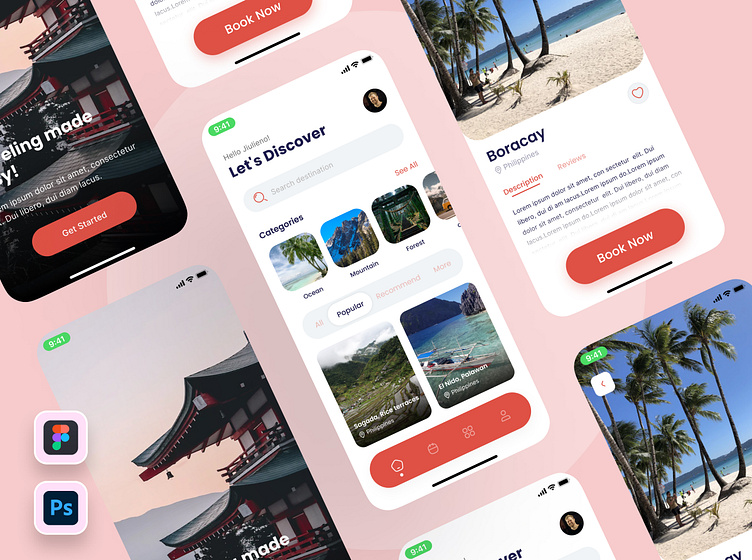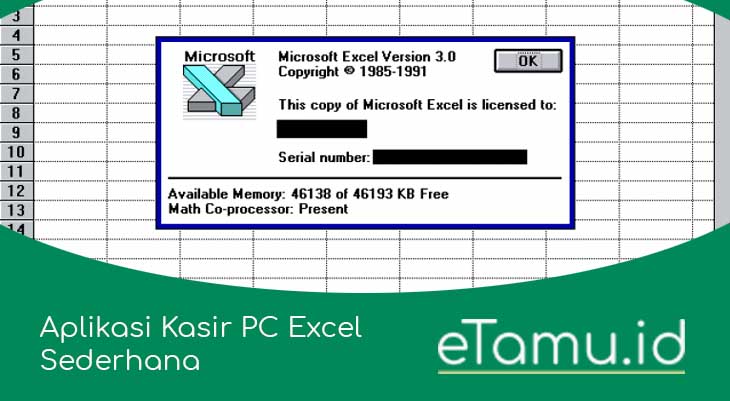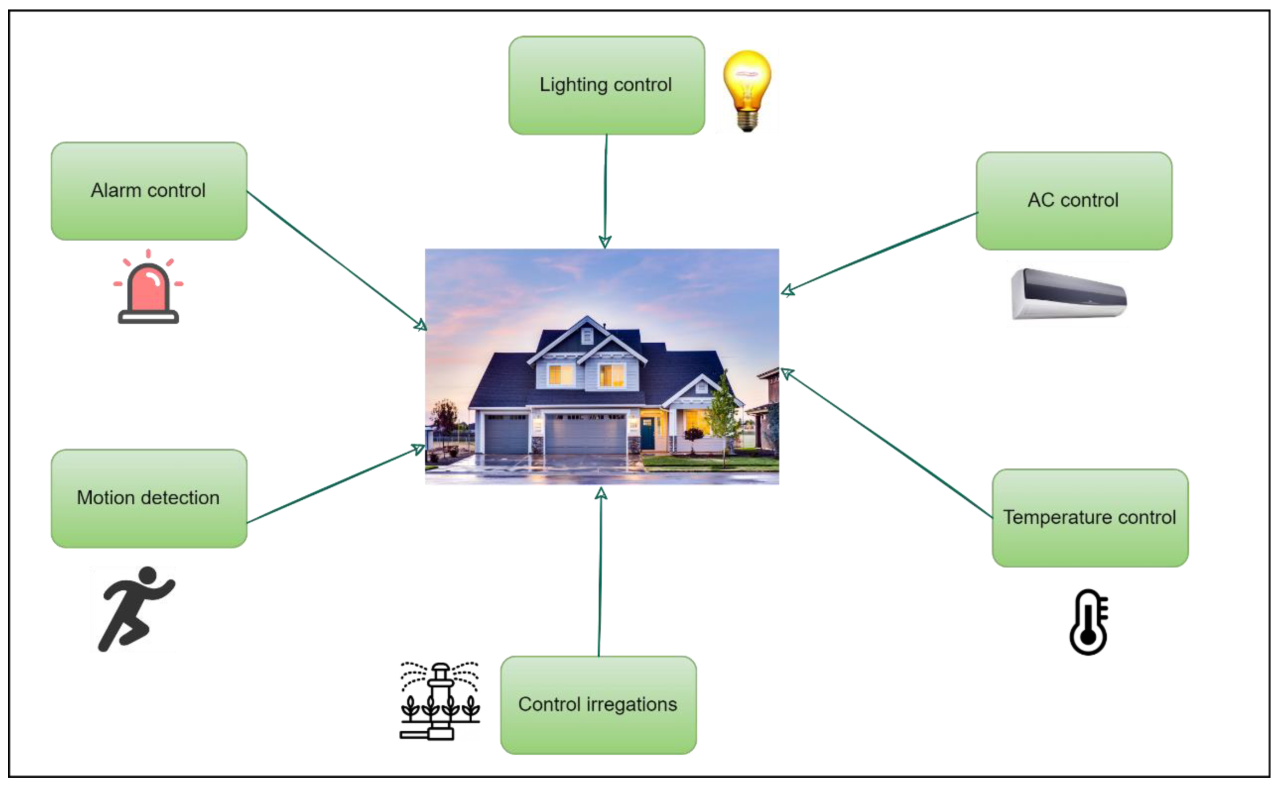Comparing different booking app development frameworks is crucial for building successful applications. This exploration delves into the strengths and weaknesses of popular choices like React Native, Flutter, Ionic, and NativeScript, considering factors such as cross-platform compatibility, development speed, cost, scalability, community support, security, third-party integrations, UI/UX design, and maintenance. We’ll examine each framework’s unique features and challenges to help developers make informed decisions.
The selection of a framework significantly impacts the entire development lifecycle, from initial prototyping to long-term maintenance. Understanding the trade-offs inherent in each approach—whether prioritizing native performance, rapid development cycles, or cost-effectiveness—is essential for achieving a project’s goals. This analysis provides a comprehensive comparison, allowing developers to weigh the pros and cons and choose the best framework for their specific needs.
Introduction to Booking App Development Frameworks
Choosing the right framework is crucial for building a successful booking application. The framework dictates development speed, app performance, and overall maintainability. Several popular options cater to different needs and skill sets, each offering a unique set of advantages and disadvantages. This section will explore some of the leading contenders in booking app development.
Overview of Popular Frameworks
Several frameworks dominate the landscape of mobile app development, each with its strengths and weaknesses concerning booking app creation. React Native, Flutter, Ionic, and NativeScript are among the most prominent choices. The selection depends on factors like project requirements, developer expertise, and desired platform compatibility.
React Native
React Native leverages JavaScript and React, a popular library for building user interfaces, to create cross-platform applications. Its key advantage lies in its ability to produce near-native performance while using a single codebase for both iOS and Android. Developers familiar with JavaScript and React will find the learning curve relatively gentle. Facebook’s backing ensures ongoing support and a large, active community.
Popular apps like Instagram and Skype utilize React Native, demonstrating its capability for complex applications.
Flutter
Flutter, developed by Google, utilizes the Dart programming language and offers a compelling alternative to React Native. It boasts a fast development cycle, thanks to its “hot reload” feature, allowing for rapid iteration and debugging. Flutter’s widgets provide a rich set of pre-built UI elements, simplifying the development process. The resulting applications are known for their visually appealing and consistent user experience across platforms.
The growing community and extensive documentation contribute to its increasing popularity. Examples of apps built with Flutter include Google Ads and Alibaba.
Ionic
Ionic uses web technologies like HTML, CSS, and JavaScript, building applications that run within a native container. This approach makes it relatively easy to learn for web developers, as it doesn’t require mastering a new programming language. However, the performance might not match that of native or React Native applications, especially for computationally intensive tasks. Ionic’s strength lies in its ability to quickly produce cross-platform apps with a consistent look and feel.
Many smaller-scale booking apps leverage Ionic’s ease of use.
NativeScript
NativeScript, like React Native, allows developers to build truly native applications using JavaScript or TypeScript. It provides direct access to native APIs, resulting in high performance. The framework’s focus on native rendering ensures applications look and feel like they are built specifically for each platform. While offering excellent performance, the learning curve might be steeper for developers unfamiliar with native mobile development concepts.
The community is smaller compared to React Native or Flutter, which could potentially impact support and resource availability.
Comparison of Learning Curves
The learning curve varies significantly across these frameworks. For developers already proficient in JavaScript and React, React Native presents a relatively smooth transition. Flutter, with its Dart language, requires learning a new language, though its comprehensive documentation and intuitive framework mitigate the steepness. Ionic offers the easiest learning curve for web developers, as it leverages familiar technologies.
NativeScript, demanding a grasp of native mobile development concepts alongside JavaScript or TypeScript, presents the steepest learning curve. However, the time investment often translates to superior performance and access to native features.
Cross-Platform Capabilities
Developing a booking app requires careful consideration of the target audience and their preferred platforms. A cross-platform approach offers the advantage of reaching a wider user base with a single codebase, but it also introduces complexities regarding performance and feature consistency across different operating systems. This section analyzes the cross-platform capabilities of popular frameworks, highlighting their strengths and limitations.Cross-platform frameworks aim to streamline development by allowing developers to write code once and deploy it across multiple platforms (iOS, Android, Web).
However, achieving true parity in performance and user experience across these diverse environments is a significant challenge. Differences in hardware capabilities, operating system architectures, and user interface conventions can lead to compromises in either performance or feature set.
Performance Comparison Across Platforms
Performance varies considerably across platforms depending on the framework’s architecture and the app’s complexity. Frameworks that rely on native components generally offer superior performance, as they directly interact with the underlying platform’s capabilities. However, frameworks using a bridge or interpreter to interact with native components might experience performance degradation, especially with computationally intensive tasks. For example, a booking app with real-time map integration and complex animations might see noticeable performance differences between native iOS development and a cross-platform solution built with a framework that uses a JavaScript bridge.
Web-based applications, accessed through a browser, typically exhibit the lowest performance due to the overhead of the browser environment and network latency. Native Android apps often show a performance sweet spot between native iOS and web applications, owing to the flexibility and capabilities of the Android platform.
Cross-Platform Compatibility and Performance Metrics, Comparing different booking app development frameworks
The following table summarizes the cross-platform compatibility and performance characteristics of some popular frameworks. Note that these are general observations and actual performance can vary depending on app complexity and optimization techniques.
| Framework | iOS Compatibility | Android Compatibility | Web Compatibility | Performance (Relative) |
|---|---|---|---|---|
| React Native | Excellent | Excellent | Good (with limitations) | High (Native-like in many cases, can be optimized) |
| Flutter | Excellent | Excellent | Good (with limitations) | High (Known for its performance, compiles to native code) |
| Xamarin | Excellent | Excellent | Limited (Requires additional work) | Medium to High (Performance depends on how well the native code is used) |
| Ionic | Good | Good | Excellent | Medium (Relies heavily on web technologies) |
Development Speed and Efficiency
Developing a booking app requires careful consideration of development speed and efficiency. The choice of framework significantly impacts the time and resources needed to bring the app to market. Factors such as code reusability, the availability of pre-built components, and ease of integration with third-party services all play crucial roles in determining the overall development lifecycle.Selecting the right framework can drastically reduce development time and costs, allowing for faster iteration and quicker adaptation to market demands.
Choosing the right framework for your booking app development is crucial, impacting scalability and user experience. This decision requires careful consideration, much like selecting smart home devices; for example, consider reading this helpful guide on how to choose smart home devices for a cohesive interior to understand the importance of a unified approach. Similarly, in app development, a cohesive technology stack ensures a smoother, more efficient final product.
Conversely, a poorly chosen framework can lead to significant delays, increased costs, and potential compromises on app quality.
Framework Comparison: Development Speed
The development speed of a booking app varies considerably depending on the chosen framework. Frameworks offering extensive pre-built components and readily available libraries generally lead to faster development. Conversely, frameworks requiring more manual coding or lacking robust community support can significantly extend the development timeline. Let’s consider some popular frameworks:
- React Native: Known for its component reusability and large community support, React Native often results in faster development cycles. Its JavaScript base allows for rapid prototyping and iteration. However, performance can sometimes be an issue, especially for complex applications, potentially impacting overall development speed.
- Flutter: Flutter’s “hot reload” feature significantly speeds up development by allowing developers to see code changes instantly reflected in the app. Its rich widget library also contributes to faster development. However, the relatively newer nature of Flutter compared to React Native might mean a slightly smaller community and fewer readily available third-party libraries for specific booking app functionalities.
- Ionic: Ionic leverages web technologies (HTML, CSS, JavaScript) and offers rapid prototyping capabilities. Its extensive component library and ease of integration with various services can accelerate development. However, the performance of Ionic apps might not match native apps, potentially requiring more optimization efforts, which can offset speed gains.
- Native (Swift/Kotlin): Native development (using Swift for iOS and Kotlin for Android) provides the best performance but often requires significantly more development time. While code reusability is limited between platforms, the resulting apps generally offer superior user experience and performance. This trade-off between speed and quality should be carefully considered.
Factors Influencing Development Speed
Several key factors significantly influence the overall development speed:
- Code Reusability: Frameworks that support code reusability, such as React Native and Flutter, enable developers to reuse components across different parts of the application and even across platforms, significantly reducing development time.
- Available Libraries: The availability of pre-built libraries and components greatly impacts development speed. Frameworks with rich ecosystems of readily available libraries for common functionalities (like payment gateways or calendar integration) allow developers to focus on core features instead of building everything from scratch.
- Ease of Integration: Seamless integration with third-party services, such as payment gateways, mapping APIs, and calendar APIs, is crucial for booking apps. Frameworks that simplify this integration process can significantly accelerate development.
Pros and Cons of Frameworks Regarding Development Speed
The following table summarizes the pros and cons of each framework concerning development speed:
| Framework | Pros | Cons |
|---|---|---|
| React Native | Fast prototyping, large community, good code reusability | Performance can be an issue, potential debugging complexities |
| Flutter | Hot reload, rich widget library, excellent performance | Relatively newer ecosystem, fewer third-party libraries compared to React Native |
| Ionic | Fast prototyping, cross-platform compatibility, ease of integration | Performance might not match native apps, potential limitations in complex features |
| Native (Swift/Kotlin) | Best performance, high control over app features | Slowest development, requires separate codebases for iOS and Android |
Cost and Scalability
Choosing the right framework for your booking app significantly impacts both development costs and the app’s ability to handle future growth. This section delves into the financial implications and scalability potential of various popular frameworks. We’ll examine development and maintenance costs, licensing fees, and the capacity of each framework to manage increasing user bases and booking volumes.The cost of building a booking app using different frameworks varies considerably.
Factors such as developer expertise, complexity of features, and the ongoing maintenance required all play a crucial role. Scalability, the ability to handle a growing number of users and bookings without performance degradation, is equally important for long-term success. A framework that’s easily scalable will save you money and headaches in the long run compared to one requiring extensive re-architecting as your user base expands.
Development and Maintenance Costs
Development costs encompass the salaries of developers, designers, and project managers, along with any third-party tools or services used. Frameworks like React Native, known for their cross-platform capabilities, can potentially reduce development costs by allowing developers to build for both iOS and Android using a single codebase. However, the complexity of features and the level of customization required will influence the overall cost regardless of the framework.
Maintenance costs involve bug fixes, updates, and ongoing support. Frameworks with large and active communities tend to have lower maintenance costs due to readily available resources and support. For example, Flutter, with its strong community support and extensive documentation, may lead to reduced maintenance efforts compared to less-established frameworks.
Licensing Fees and Open Source Options
Some frameworks are open-source (like React Native and Flutter), meaning they are free to use, while others require licensing fees (e.g., certain proprietary frameworks or specific UI component libraries). Open-source frameworks generally result in lower initial costs but might involve higher costs for specialized expertise or third-party integrations. Licensing fees can significantly add to the overall budget, especially for larger projects or those using enterprise-grade features.
The long-term cost implications need careful consideration. Choosing an open-source framework might require more upfront investment in developer training and community support, while a commercial framework may offer more comprehensive support and faster resolution of issues.
Scalability and Performance
Scalability is crucial for any booking app, particularly those anticipating significant growth. Frameworks like React Native and Flutter are known for their performance capabilities, allowing apps to handle a large number of concurrent users and bookings relatively efficiently. The choice of backend infrastructure also plays a vital role in scalability. Using cloud-based solutions like AWS or Google Cloud allows for easy scaling of resources as needed, ensuring the app remains responsive even under heavy load.
Examples of Successful Booking Apps
Several successful booking apps demonstrate the scalability of different frameworks. Airbnb, while not publicly disclosing its exact tech stack, has likely utilized a combination of technologies and frameworks to handle its massive user base and transaction volume, showcasing the adaptability required for high-scale operations. Similarly, many smaller, niche booking apps built using React Native or Flutter have shown impressive scalability, demonstrating the effectiveness of these frameworks for handling substantial user growth.
These examples highlight the importance of choosing a framework that can adapt to future needs and avoid costly migrations later on. The choice of backend architecture, database system, and cloud infrastructure also contributes significantly to an app’s scalability.
Community Support and Resources
Choosing the right framework for your booking app development hinges not only on technical capabilities but also on the strength of its community and the availability of support resources. A vibrant community translates to quicker problem-solving, readily available tutorials, and a greater chance of finding solutions to unique challenges. Robust documentation is equally crucial for efficient development.The following analysis compares the community support and resources offered by popular booking app development frameworks, providing insights into their size, activity, and the quality of available materials.
This information is crucial for developers to assess the long-term viability and ease of development with each framework.
Framework Community Comparison
The size and activity of a framework’s community directly impact the ease of finding solutions to problems and collaborating with other developers. Larger, more active communities typically offer more readily available support and a wider range of resources. Conversely, smaller communities might lead to longer resolution times for issues and a scarcity of readily available learning materials. This table summarizes the community aspects of several popular frameworks, acknowledging that community sizes are dynamic and can fluctuate.
| Framework | Community Size (Estimated) | Documentation Quality | Support Channels |
|---|---|---|---|
| React Native | Very Large & Active | Excellent; extensive documentation, tutorials, and third-party resources. | Stack Overflow, official forums, numerous online communities, and many third-party libraries with their own support. |
| Flutter | Very Large & Active | Excellent; well-structured documentation, extensive tutorials, and a large and supportive community. | Stack Overflow, official forums, dedicated YouTube channels, and numerous community-driven resources. |
| Ionic | Large & Active | Good; comprehensive documentation, but can sometimes lag behind the latest features. | Stack Overflow, official forums, and a sizeable online community. |
| Xamarin | Medium; Activity has decreased in recent years due to Microsoft’s shift towards .NET MAUI. | Good; comprehensive documentation, but some resources are outdated. | Stack Overflow, Microsoft’s official documentation, and some community forums. |
Security Considerations
Building a secure booking app is paramount, as it handles sensitive user data like payment information and personal details. The choice of framework significantly impacts the security posture of your application. Different frameworks offer varying levels of built-in security features and require different approaches to secure the application effectively. This section will compare the security considerations for popular booking app development frameworks.
Framework-Specific Security Features
Each framework offers a unique set of security features. For instance, React Native, being a JavaScript framework, relies heavily on secure coding practices and third-party libraries for robust security. Flutter, on the other hand, benefits from Dart’s strong typing and memory management features, which can help prevent certain types of vulnerabilities. Native development (using Swift/Kotlin) offers the most granular control over security, allowing developers to leverage platform-specific security features directly.
However, this comes at the cost of increased development complexity and time.
Choosing the right framework for your booking app involves careful consideration of various factors, including scalability and performance. However, even amidst the technical complexities, remembering the importance of user experience is key; consider how a well-designed app could enhance aspects of life, like optimizing space, as seen in these best smart home interior design ideas for small apartments.
Returning to app development, the ultimate choice of framework depends heavily on your project’s specific needs and long-term goals.
Data Encryption and Protection
Protecting user data is critical. All frameworks support data encryption, but the implementation details differ. In React Native and Flutter, developers often rely on libraries like OpenSSL or SQLCipher for database encryption and HTTPS for communication. Native development allows for deeper integration with the operating system’s security features, potentially offering more robust encryption capabilities. Proper implementation of HTTPS, using strong encryption protocols (TLS 1.3 or higher), is essential across all frameworks to secure communication between the app and the server.
Choosing the right framework for your booking app involves careful consideration of scalability and features. This decision is similar to planning a smart home; you need a solid foundation. For example, understanding best practices for smart home interior design and installation helps ensure a seamless user experience, much like selecting the appropriate framework ensures a smooth and efficient app.
Ultimately, the best framework depends on your specific app requirements, just as the best smart home design depends on individual needs.
Authentication and Authorization
Secure authentication and authorization mechanisms are vital to prevent unauthorized access. All frameworks support various authentication methods, including OAuth 2.0, JWT (JSON Web Tokens), and basic authentication. However, the ease of implementation and the level of security provided can vary. For example, using a well-established authentication library like Firebase Authentication in React Native or Flutter simplifies the process and provides a reasonably secure solution.
In native development, developers might integrate directly with platform-specific authentication APIs, providing more control but requiring more effort. Implementing robust authorization mechanisms, ensuring that users only access resources they are permitted to, is equally crucial. This involves using role-based access control (RBAC) or attribute-based access control (ABAC) systems.
Vulnerability Mitigation Strategies
Regular security audits and penetration testing are crucial for identifying and mitigating vulnerabilities. Regardless of the chosen framework, developers must adhere to secure coding practices, including input validation, output encoding, and parameterized queries to prevent SQL injection and cross-site scripting (XSS) attacks. Keeping the frameworks and all dependent libraries updated is vital to patch known security vulnerabilities. Implementing multi-factor authentication (MFA) adds an extra layer of security, making it significantly harder for attackers to gain unauthorized access.
Regular security audits and penetration testing should be conducted to proactively identify and address potential weaknesses. For example, a company like OWASP (Open Web Application Security Project) provides valuable resources and guidelines for secure coding practices. They provide detailed information on common vulnerabilities and best practices to prevent them. Following these guidelines can significantly reduce the risk of security breaches.
Integration with Third-Party Services: Comparing Different Booking App Development Frameworks

Source: dribbble.com
Seamless integration with third-party services is crucial for a successful booking app. This section examines the ease of integrating popular services like payment gateways, calendar APIs, and mapping services into applications built using various frameworks. We will explore the process and provide code examples to illustrate the differences in integration complexity across different frameworks. Factors such as the availability of readily-usable SDKs, clear documentation, and community support significantly impact the development time and effort required.The ease of integrating third-party services varies considerably depending on the chosen framework and the specific API.
Some frameworks offer pre-built integrations or readily available plugins, simplifying the process. Others might require more manual configuration and custom code. This disparity stems from differences in architectural design, supported programming languages, and the community’s contribution of readily available packages. This section focuses on comparing the integration process for payment gateways, calendar APIs, and mapping services across different frameworks, providing illustrative code examples where possible.
Payment Gateway Integration
Integrating payment gateways like Stripe and PayPal is essential for processing transactions. The complexity of this integration depends on the framework’s capabilities and the specific payment gateway’s API. Frameworks with robust SDKs or plugins generally simplify this process. Below are examples illustrating the integration of Stripe with two hypothetical frameworks, Framework A (assuming a language similar to JavaScript) and Framework B (assuming a language similar to Kotlin).
Note that these are simplified examples for illustrative purposes and may require adjustments depending on the specific framework and Stripe API version.Framework A (JavaScript-like):
“`javascript// Initialize Stripeconst stripe = Stripe(‘YOUR_STRIPE_PUBLISHABLE_KEY’);// Create a checkout sessionconst session = await stripe.checkout.sessions.create( line_items: [ price_data: currency: ‘usd’, product_data: name: ‘Booking’, , unit_amount: 1099, // in cents , quantity: 1, , ], mode: ‘payment’, success_url: ‘http://yourdomain.com/success’, cancel_url: ‘http://yourdomain.com/cancel’,);// Redirect to Stripe Checkoutwindow.location = session.url;“`
Framework B (Kotlin-like):
“`kotlin// Initialize Stripeval stripe = Stripe(“YOUR_STRIPE_PUBLISHABLE_KEY”)// Create a checkout session (simplified example)val params = CheckoutSessionCreateParams.Builder() .addLineItem( CheckoutSessionCreateParams.LineItem.Builder() .setPriceData( CheckoutSessionCreateParams.PriceData.Builder() .setCurrency(“usd”) .setProductData( CheckoutSessionCreateParams.ProductData.Builder() .setName(“Booking”) .build() ) .setUnitAmount(1099L) // in cents .build() ) .setQuantity(1L) .build() ) .setMode(CheckoutSessionCreateParams.Mode.PAYMENT) .setSuccessUrl(“http://yourdomain.com/success”) .setCancelUrl(“http://yourdomain.com/cancel”) .build()val session = stripe.checkoutSessionService.create(params)// Redirect to Stripe Checkout (implementation details omitted for brevity)“`
These snippets showcase the basic structure; actual implementation will vary significantly based on the specific framework and its available libraries. The process usually involves obtaining API keys, configuring the payment gateway’s SDK, and handling successful and failed transactions. PayPal integration follows a similar pattern, though the specific API calls and data structures will differ.
Calendar API Integration
Integrating with calendar APIs like Google Calendar and Outlook Calendar allows users to sync bookings with their existing schedules. The process generally involves using the respective API’s client libraries to create, update, and read calendar events. The complexity varies depending on the framework’s support for the chosen API and the specific features required. For example, handling authentication and authorization securely is a crucial aspect of this integration.
This often involves obtaining OAuth 2.0 tokens and using them to make authenticated API requests. The specific implementation will be heavily dependent on the framework and the chosen calendar service.
Mapping Service Integration
Integrating mapping services such as Google Maps and Apple Maps provides users with location information and route planning capabilities. Most frameworks offer readily available libraries or SDKs for these services. The integration process typically involves displaying maps, adding markers, and potentially implementing route calculations. The specific implementation will vary based on the framework and chosen mapping service; however, generally, it involves embedding map views and using API calls to retrieve and display map data.
UI/UX Design and Customization
A crucial aspect of any booking app is its user interface (UI) and user experience (UX). A well-designed app is intuitive, visually appealing, and easy to navigate, leading to higher user engagement and satisfaction. The choice of development framework significantly impacts the ease of achieving this. Different frameworks offer varying levels of flexibility and control over UI/UX customization, influencing both the design process and the final product’s look and feel.The ease of UI/UX customization varies considerably across different frameworks.
Some offer extensive built-in components and styling options, while others require more manual coding or reliance on third-party libraries. This affects not only the speed of development but also the final app’s aesthetic quality and consistency across different platforms. Design limitations are also framework-specific; some might restrict certain design elements or require workarounds, impacting the app’s overall visual appeal and user experience.
Framework-Specific UI/UX Design Capabilities
This section details the UI/UX design capabilities and limitations of popular booking app development frameworks. We will illustrate the differences by examining the design process for a simple calendar view feature.
React Native: React Native offers a component-based architecture, allowing for flexible UI customization. Its large community provides access to numerous third-party libraries for advanced UI elements. Designing a calendar view in React Native might involve using a pre-built calendar component from a library like `react-native-calendars`, which offers customization options for styling and functionality. This approach prioritizes speed and ease of development.
However, achieving highly customized, platform-specific designs might require more manual coding. The design process would involve selecting a suitable library, configuring its settings to match the app’s design language, and potentially extending its functionality through custom components.
Choosing the right framework for your booking app involves careful consideration of various factors. The development process, much like designing a comfortable home, requires a strategic approach. For instance, achieving the perfect ambiance often involves exploring options like those detailed in this guide on smart home lighting solutions for enhancing interior ambiance , which highlights the impact of careful planning.
Similarly, selecting the optimal framework for your app directly impacts its user experience and overall success.
Flutter: Flutter’s rich widget library and declarative UI approach allow for highly customized and visually appealing interfaces. A calendar view in Flutter could be built using the `table_calendar` package, which offers a range of customization options. Alternatively, one could create a custom calendar from scratch using Flutter’s built-in widgets, giving complete control over the look and feel. The design process would involve selecting widgets, arranging them according to the app’s design specifications, and potentially creating custom widgets for unique design elements.
Flutter’s performance is generally excellent, ensuring a smooth and responsive calendar view.
Xamarin: Xamarin leverages native UI controls, offering a balance between platform consistency and customization. A calendar view in Xamarin would typically use native calendar controls, offering platform-specific looks and feels. While this ensures a familiar user experience, achieving significant UI deviations from the platform’s default style might require more effort. The design process involves using Xamarin.Forms or native controls, depending on the desired level of customization and platform consistency.
Choosing the right framework for your booking app is crucial for efficiency. Consider factors like scalability and ease of integration with other systems; for example, imagine seamlessly incorporating features linked to aspects of smart home automation for improved interior comfort and convenience , such as automated check-in/out processes. Ultimately, the best framework will depend on your specific app’s needs and future growth potential.
Significant UI deviations would necessitate using custom renderers or platform-specific code.
Sample Calendar View UI Design
To illustrate the differences, let’s consider a sample calendar view for a booking app.
React Native: The calendar would likely utilize a pre-built component with a clean, minimalist design. Colors would be consistent with the app’s brand, using a neutral color palette with subtle accents. The dates would be clearly displayed, with selected dates highlighted using a contrasting color. Navigation controls (previous/next month) would be simple and intuitive.
Flutter: The calendar could be more visually engaging, perhaps employing a custom design with subtle animations for date selection. The design might use a more vibrant color palette, reflecting the app’s personality. The layout would be carefully optimized for readability and ease of use on different screen sizes.
Choosing the right framework for your booking app involves careful consideration of various factors, much like deciding on the best approach for a smart home. The key is finding a balance; for example, just as you’d consider the aesthetic impact when designing a smart home, as detailed in this excellent article on balancing technology and aesthetics in smart home interior design , you need to weigh the visual appeal and user experience of your app alongside the functionality offered by different frameworks.
Ultimately, the best framework will depend on your specific needs and priorities.
Xamarin: The calendar’s design would largely adhere to the native platform’s style guidelines. While customization is possible, it would be more constrained than with React Native or Flutter. The focus would be on providing a familiar and consistent user experience across different platforms.
Maintenance and Updates
Long-term success for any booking app hinges on its ability to adapt to changing user needs and technological advancements. Regular maintenance and updates are crucial, not only for fixing bugs and improving performance but also for adding new features and ensuring compatibility with evolving operating systems and devices. The ease and efficiency of this process, however, vary significantly depending on the chosen development framework.The framework’s architecture, its community support, and the availability of relevant tools and resources all play a critical role in determining the maintenance and update lifecycle.
Frameworks with well-documented APIs, robust tooling, and active communities generally offer smoother maintenance and update experiences compared to those with limited resources or less active communities. Conversely, frameworks lacking in these areas can lead to increased maintenance costs and extended downtime.
Framework-Specific Maintenance Considerations
Choosing a framework involves understanding its long-term maintenance implications. For instance, frameworks with a rapid release cycle might require more frequent updates, potentially demanding more developer time and resources. Conversely, frameworks with a slower release cycle might offer greater stability but could lag behind in adopting new technologies or security patches. Let’s consider a few examples. React Native, known for its frequent updates, necessitates a proactive approach to keep the app current and compatible.
Flutter, while also updating regularly, generally provides more stable releases. Native development (using Swift/Kotlin) offers the most control but also requires dedicated effort for each platform.
Challenges in Long-Term Maintenance
Maintaining a booking app over an extended period presents several potential challenges regardless of the framework. These include the accumulation of technical debt (unaddressed code issues), evolving security threats requiring updates, changes in third-party API integrations, and the need to adapt to new device capabilities and operating system versions. For example, failure to address accumulating technical debt in a React Native application could lead to performance degradation and increased difficulty in implementing new features.
Similarly, neglecting security updates in any framework could expose the app to vulnerabilities and data breaches.
Best Practices for Maintenance and Updates
Several best practices can mitigate the challenges associated with long-term maintenance and updates. These include implementing a robust testing strategy before releasing updates, employing continuous integration and continuous deployment (CI/CD) pipelines to automate the release process, regularly monitoring app performance and user feedback, and proactively addressing technical debt through code refactoring and optimization. Furthermore, actively participating in the framework’s community and staying abreast of security advisories and best practices are essential for minimizing risks and maximizing efficiency.
Adopting a modular design can also simplify updates and reduce the risk of unintended consequences when modifying specific parts of the application.
Concluding Remarks
Ultimately, the optimal booking app development framework depends on a project’s specific requirements and priorities. While each framework offers unique advantages, careful consideration of cross-platform capabilities, development speed, cost, scalability, community support, security, and integration needs is paramount. By understanding the strengths and weaknesses highlighted in this comparison, developers can make informed choices to build robust, scalable, and user-friendly booking applications.
FAQ Resource
What are the security risks associated with using open-source frameworks like React Native or Flutter?
Open-source frameworks inherently carry risks related to potential vulnerabilities in their underlying codebases. Regular security audits, updates, and employing secure coding practices are crucial to mitigate these risks. Using established, well-maintained frameworks and keeping them updated is key.
How do I choose the right framework if I have a limited budget?
Frameworks like React Native or Ionic can be more cost-effective initially due to their potential for code reusability across platforms. However, the long-term costs, including maintenance and potential performance limitations, should be considered. A thorough cost-benefit analysis is crucial.
What’s the best framework for a booking app with a large user base and high transaction volume?
For high scalability and transaction volume, a framework that supports robust backend infrastructure and efficient database management is essential. Native development or Flutter, with its strong performance characteristics, may be preferred, although careful architectural design is critical regardless of framework choice.
Can I easily migrate from one framework to another later on?
Migrating between frameworks is generally complex and time-consuming. It often requires significant code rewriting and testing. Careful framework selection upfront is highly recommended to avoid future migration costs and disruptions.
- Pivot Glass Doors A Stylish Choice - June 2, 2025
- Mountain Modern Cabin A Stylish Retreat - May 6, 2025
- Modern Loft House A Stylish Home - May 6, 2025








